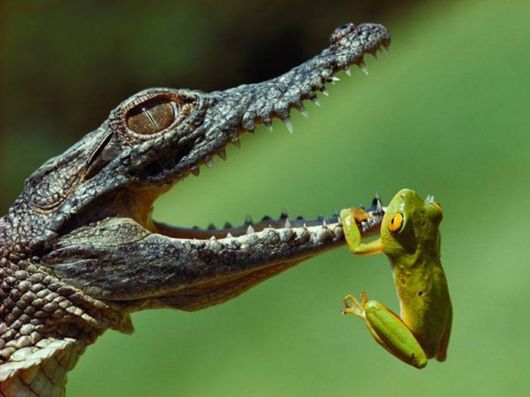01. Nile Crocodile

Photograph by Jonathan Blair, National Geographic
A year-old Nile crocodile attempts to snap up a frog in the St. Lucia Estuary in South Africa (from the National Geographic book Visions of Earth). Also known as the common crocodile, these large reptiles are distributed across much of Africa, and they have earned their reputation as among the most ferocious, deadly animals on the planet.
Male crocs typically measure from 11.5 to 16 feet long (3.5 to 5 meters), but they have been known to exceed 18 feet (5.5 meters) in length. Individual crocodiles attack anything the same size or smaller than them. They are occasionally known to hunt in packs, in which they can take down animals as large as hippos and rhinos. Nile crocodiles occasionaly prey on human beings, with estimates ranging from several hundred to several thousand deaths a year.
The ancient Egyptians feared and revered Nile crocodiles and worked them into their mystic religions. In modern times, the big animals were heavily hunted for their leather, although recent protections have helped stabilize the population at an estimated 250,000 to 500,000.
 IMAGE CORNER
IMAGE CORNER Wallpapers/Cool Images
Wallpapers/Cool Images Animals and Wildlife
Animals and Wildlife Scariest Freshwater Animals By Nat Geo
Scariest Freshwater Animals By Nat Geo IMAGE CORNER
IMAGE CORNER Wallpapers/Cool Images
Wallpapers/Cool Images Animals and Wildlife
Animals and Wildlife Scariest Freshwater Animals By Nat Geo
Scariest Freshwater Animals By Nat Geo
